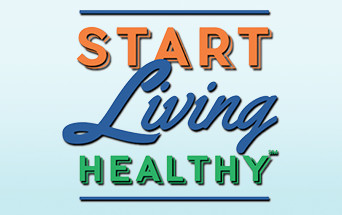Risk Factors
While some risk factors are out of your control, such as family history of diabetes, age, or ethnicity, most diabetes risk factors are controllable. Risk factors are behaviors or conditions that increase your chances of developing diabetes.
Overweight/Obesity
The combination of physical inactivity and poor nutrition has led to an alarming increase in obesity in Hawaii. Overweight and obese individuals are at higher risk for developing diabetes and its risk factors, such as high blood pressure and high cholesterol. In Hawaii, over half (60%) of adults are overweight or obese and 29% of high school students are overweight or obese.1,2,3,4
A combination of regular exercise and a healthy diet is the best way to keep from getting overweight or obese. Be wary of fad diets that restrict certain nutrients and portion sizes that are too large.
Physical Inactivity
Physical activity can control blood pressure, reduce cholesterol levels, and help control and maintain weight. People who do not get enough physical activity risk developing high blood pressure, high cholesterol, and obesity. More than one-half of Hawaii adults do not meet the recommendation for physical activity and 19% reported not getting any leisure time physical activity in the past month. 5
Take simple steps to get more exercise – take a walk after dinner with your family or on your lunch break. Reduce television time to two hours or less with each day, and exercise during the commercials of your favorite shows. Aim for 30-60 minutes of physical activity most days of the week, and remember that it can be broken up throughout the day. The important thing is to keep moving!
Poor Nutrition
Children and adults should limit sodium, saturated and trans fat, and increase vegetables and whole grains in their diets. Three-quarters of Hawaii adults eat less than the recommended amount of fruits and vegetables.
It’s easy to eat fruits and vegetables! If you aim to have at least one fruit or vegetable at each meal you can easily eat five servings in a day. Fresh, frozen and canned fruits and vegetables all have health benefits. Watch for saturated fats in your diet. Saturated fat is found in many processed foods. Check the food label to limit the total amount of fat you eat to 65 grams or less per day, of which no more than 20 grams is saturated fat.
High Blood Pressure
Blood pressure is the force of blood pushing against the artery walls. Chronic high blood pressure can cause hardening of the artery walls which can eventually cause decreased blood flow. High blood pressure is often referred to as a “silent killer.” In Hawaii, 27% of adults reported that they have high blood pressure.6
Abnormal Cholesterol Levels
HDL (“good”) cholesterol that is too low (35 mg/dL or lower) or tryglyceride levels that are too high (250 or higher) are risk factors for diabetes. Adults 20 years or older should have their cholesterol checked at least once every five years.
Regular exercise and a healthy diet low in fat can help maintain healthy cholesterol levels. Your health care provider may also ask you to take medications to manage your cholesterol.
Family History of Diabetes or Gestational Diabetes
You are at a higher risk of developing diabetes if a parent or sibling has diabetes. Prior history of gestational diabetes or having at least one baby weighing more than 9 pounds is a risk factor for diabetes. Women who develop gestational diabetes have a 35% to 60% chance of getting diabetes in the next 10 to 20 years.
Inform your doctor of your family history of diabetes and take action to manage the risk factors that are within your control!
Age and Ethnicity
The risk of developing diabetes increases with age with adults over age 45 at the greatest risk. For reasons not well understood, certain ethnic groups are also at increased risk of developing diabetes. These groups include non-Hispanic Blacks, Hispanic/Latino Americans, Asian Americans, Native Hawaiians and Pacific Islanders, American Indians, and Alaska Natives.
REFERENCES
1. Hawaii State Department of Health, Hawaii Health Data Warehouse, Behavioral Risk Factor Surveillance System. BMI – OBESITY (BMI GE 30), ADULT. Published 02/28/2024. Accessed 03/28/2024. https://hhdw.org/report/indicator/summary/BMIAdultAnyCatAA.html
2. Hawaii State Department of Health, Hawaii Health Data Warehouse, Behavioral Risk Factor Surveillance System. BMI – OVERWEIGHT (25 LE BMI LT 30), ADULT. Published 02/28/2024. Accessed 03/28/2024. https://hhdw.org/report/indicator/summary/BMIAnyCatAA_Ovrwt.html
3. Hawaii State Department of Health, Hawaii Health Data Warehouse, Behavioral Risk Factor Surveillance System. BMI – OBESITY (BMI GE 95%ILE), HIGH SCHOOL. Published 05/15/2023. Accessed 03/28/2024. https://hhdw.org/report/indicator/summary/OvrWgt_HS_ST.html
4. Hawaii State Department of Health, Hawaii Health Data Warehouse, Behavioral Risk Factor Surveillance System. BMI – OVERWEIGHT (BMI GE 85%ILE & LT 95%ILE), HIGH SCHOOL. Published 03/30/2023. Accessed 03/28/2024. https://hhdw.org/report/indicator/summary/OvrWgt_Risk_HS.html
5. Hawaii State Department of Health, Hawaii Health Data Warehouse, Behavioral Risk Factor Surveillance System. PHYSICAL ACTIVITY – MET FEDERAL GUIDELINES, ADULT. Published 07/31/2022. Accessed 03/28/2024. https://hhdw.org/report/indicator/summary/RecPhysicalActAdultAA11.html
6. Hawaii State Department of Health, Hawaii Health Data Warehouse, Behavioral Risk Factor Surveillance System. HIGH BLOOD PRESSURE, ADULT. Published 05/15/2023. Accessed 03/28/2024. https://hhdw.org/report/indicator/summary/DXBPHighAA.html



